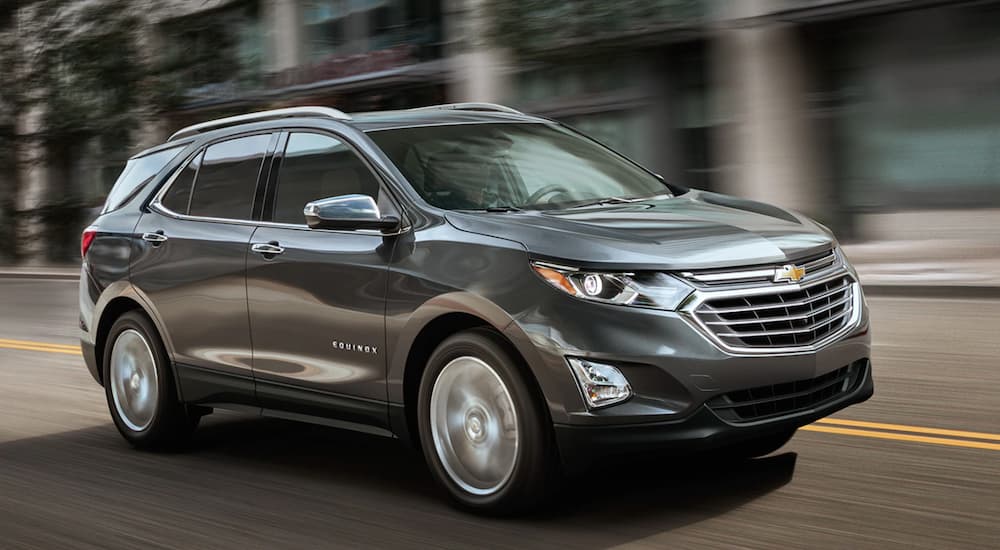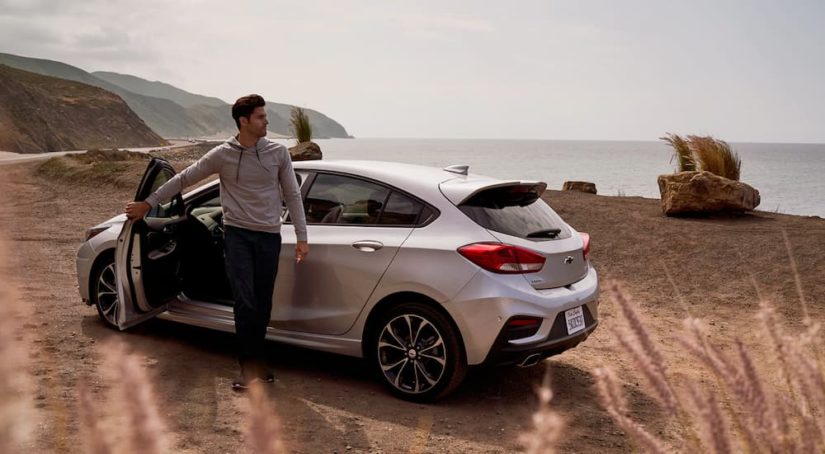It’s hard enough to shop for and find a reliable used car, but when you add varying quality levels to the mix, it’s downright stress-inducing. Navigating online classifieds and trying to understand flashy app-based novelty car buying services is enough to make you decide to abandon the search altogether. Then, someone throws in a whole new dynamic like a Certified Pre-Owned Chevy. Certified?
Luckily – or unluckily for those prone to analysis paralysis – there’s a better and more structured way to measure the quality of a used vehicle. It doesn’t need to be arbitrary or based on the opinion of your local corner auto mechanic. Like any other system of metrics, you need a benchmark. In the instance of used cars, that benchmark is the Certified Pre-Owned (CPO) classification.
CPO vehicles sit at the top of the used vehicle food chain, dominating in both quality, near newness, and availability of factory-level warranty coverage. It’s a one-two-three punch of practicality and reliability that delivers a worry-free ownership experience. What’s the catch, you might ask? CPO cars are generally more costly, but that’s the price of peace of mind, and we believe it’s worth the extra cash.

The Building Blocks of a CPO Car
To better understand how quality levels are determined in the used car landscape, it’s helpful to review common category nomenclature. The term certified is liberally applied to a lot of used cars by savvy retailers looking to move metal, but a true certified pre-owned – or CPO – vehicle bears an important distinction: it’s certified by the standards of the factory that manufactured it.
Take Chevy, for example. Under the umbrella of parent company General Motors, Chevy offers GM Certified, a comprehensive certification process that vets vehicles for quality. To even be considered for CPO certification, a vehicle must have fewer than 75,000 miles on the odometer, offer a clean title, and be less than 6 model years old. Cars that meet these criteria are then subjected to a comprehensive 172-point inspection, and just one failure will banish it to the regular used car lot.
CPO certification for the GM Certified program takes place only at authorized Chevy dealerships, a fact that adds to the consistency of the evaluation process. It makes sense since these vehicles only appear on Chevy dealers’ lots. You won’t find GM Certified vehicles at the sketchy dealership down the street. This fact serves to further differentiate CPO vehicles from other used cars. Other manufacturers follow the same protocols, making the term “Certified Pre-Owned” a universal and industry-standard stamp of quality.
The Inspection Process
Vehicles won’t even get the time of day from inspectors if they don’t come with clean titles and problem-free CARFAX reports. What does this mean? When a car incurs damage that triggers an insurance claim, that activity is logged in its history and permanently attached to its VIN. Instances like hail damage or an accident that totals the vehicle trigger the issuance of a salvage title. Both situations exclude a vehicle from CPO certification.
Every CPO vehicle candidate found to have a clean title receives a thorough inspection both inside and out. Technicians are focused on finding evidence of excessive wear and tear, as well as signs of general mechanical deficiencies. CPO vehicles look as good as they ride largely because this scrutiny extends to every square inch of sheet metal. Everything from seating surfaces to infotainment components is tested and evaluated, and all findings are logged on a report and tracked.
Road testing is another tool used by inspectors to ascertain a vehicle’s suitability for CPO status. Nothing uncovers issues faster than a test drive, and under the watchful eye of factory-trained technicians, even the smallest mechanical problem won’t go overlooked. What to us is an annoying rattle or vibration is to them a disqualifying inadequacy. In short, no stone is unturned during this process.
Certification professionals also pay attention to the little things, like wiper blades, fluid levels, and tire tread wear. Even though it’s normal for features like tires to wear over time, what isn’t normal are uneven wear patterns and on-the-road vibrations, and low fluid levels are often a sign that the previous owner wasn’t meticulous with recommended scheduled maintenance.
Assuming the vehicle passes this rigorous process, it is then completely reconditioned from bumper to bumper. Any door dings are repaired, interior odors eliminated, and overall the vehicle is restored to like-new condition. The reconditioning is so thorough, in fact, that prospective buyers often even notice faint traces of that coveted new car smell during the test drive.

Warranty and Other CPO Benefits
Why buy certified? Probably the biggest motivator is GM’s extensive factory warranty coverage and the long list of buyer perks exclusive to CPO cars, trucks, vans, and SUVs. Sure, some used car retailers offer short-term warranty coverage, but it’s not the norm. More commonly, buyers will find large “as is” disclaimers stuck to the vehicle’s window alongside the price breakdown.
GM Certified vehicles receive a 6-year/100,000-mile powertrain warranty that covers major components like the engine and transmission. They also receive a generous 12-month/12,000-mile bumper-to-bumper limited warranty that covers other vehicle parts that commonly fail in the first year of ownership (e.g., convenience features). It eases buyers into the used car ownership experience vs sending them home with 100 percent financial responsibility for mechanical issues.
The included 3-day/150-mile no-questions-asked exchange policy is a highly coveted CPO benefit. It allows buyers the freedom to sail through any dreaded buyer’s remorse without owning the consequences. Instead, if for any reason the vehicle doesn’t live up to its promise – or if you simply don’t like the exterior color – just bring it back and pick a different one. It really is that easy.
In addition to generous factory-backed warranty coverage, all GM Certified vehicles include a period of free scheduled maintenance, including oil changes, filters, and tire rotations, as well as 24/7 roadside assistance. This adds up to a lower cost-of-ownership in the first year and more peace of mind, both of which are beneficial for used car buyers. Add to that the simplicity of receiving maintenance at authorized dealerships – genuine factory parts, convenient online scheduling, extended service hours – and CPO ownership is even more attractive.
Lastly, all GM Certified vehicles receive a 3-month trial SiriusXM satellite radio subscription and a free taste of OnStar-connected services. OnStar adds all kinds of convenience and safety functionality, including app-based vehicle access, emergency services, and access to a pool of trained operators to assist with everything from dispatching an ambulance to making dinner reservations.
Are CPO Vehicles Worth the Extra Cost?
While buying CPO certainly seems like a no-brainer, there is a trade-off: you’re probably going to pay more for your used CPO car. Remember, most of these vehicles are lease returns, so they’ve been lovingly cared for (because lessors don’t want to pay end-of-lease fees) and driven sparingly. In the used car universe, CPO vehicles are the cream-of-the-crop.
One of buyers’ biggest worries when shopping used is quality. Beyond that, the actual effort involved is daunting. If you’re buying from a private seller, expect to do your own paperwork. You also have to either inspect the vehicle yourself or find a mechanic you trust to do it for you. As with any used purchase, the list of unknowns is extensive.
We all hear stories about the guy that found a vintage Mustang in Granny’s garage with 20,000 miles on the odometer and virtually unblemished factory paint. Increasingly, though, these stories are just that – stories. Finding a quality used car is like finding a proverbial needle in a haystack. Unless that is, you defer to the closest approximation to a sure thing in the used car market: a CPO vehicle.



